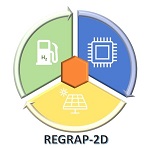Since 2014, the Centro de Investigaciones Energéticas, Medioambientales y Tecnológicas (CIEMAT) and the Instituto de Sistemas Optoelectrónicos, y Microtecnología (ISOM) have combined infrastructure, staff and time in a common goal: "Implementation of graphene-based materials in energy generation and storage devices".

The European Union (EU) aims to be climate neutral by 2050. In other words, the EU has set itself the goal of having an economy with zero net greenhouse gas emissions. To achieve this goal, it is necessary to create efficient devices with new advanced materials that can generate and store energy in a safe, sustainable and clean way.

This project develops new technologies and engineering for processing graphene, a material with great potential that has not been implemented in many commercial devices, for using it in energy generation and storage devices.

Throughout all these years, the projects in which these groups have been involved have had a common thread ”the study and subsequent implementation of graphene-based materials in two devices: a) Advanced solar cells that, in addition to generating energy, have the capacity to store it through the use of supercapacitors and b) Hydrogen storage systems applicable to fuel cells”.
The first project approved was GRAFAGEN, GRAPHENE FOR ENERGY GENERATION AND STORAGE DEVICES (ENE2013-47904-C3-3-R), funded by the Ministry of Economy and Competitiveness. The main objective of this project was to improve and optimize the efficiency of existing energy storage systems by using graphene materials thanks to their extraordinary characteristics. Commercial graphene materials were implemented for energy storage systems and the necessary infrastructure was established to develop new graphene-based materials.
This project had its continuity in the project DIGRAFEN, GRAPHENE DEVICES FOR IMPROVING RENEWABLE ENERGIES (ENE2017-88065-C2-2-R), also funded by the Ministry of Economy and Competitiveness. The scientific and technological objectives of this project were:
- Implementation of monolayer (2D) graphene in silicon heterojunction solar cells and Schottky barrier cells to improve the efficiency of power generation.
- Implementation of three-dimensional (3D) graphene and its use in double-layer supercapacitors and in the hand-made hydrogen storage apparatus.
- Connecting a solar cell backside to a supercapacitor to form a device that integrates the energy source and storage element.
In this project, the new graphene-based materials synthesized were implemented and optimized in the three programmed applications.
The participation of each group in the projects was as follows:

Responsible for the manufacture of graphene (2D and 3D) using the chemical vapour deposition (CVD) technique, its transfer and the manufacture of double-layer planar supercapacitors.

In charge of designing and manufacturing solar cells. Synthesising graphene materials by chemical means and implementing a hydrogen storage system, and studying the feasibility of integrating solar devices with supercapacitors.

- Research Group on Materials of Interest in Renewable Energies (MIRE) belonging to the Autonomous University of Madrid.
- Physics Department of the University of Calabria (Italy).
